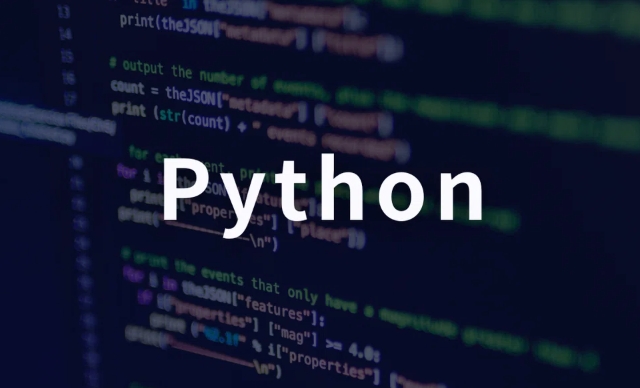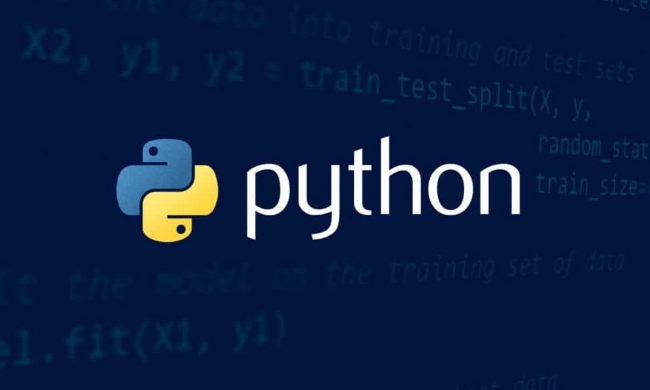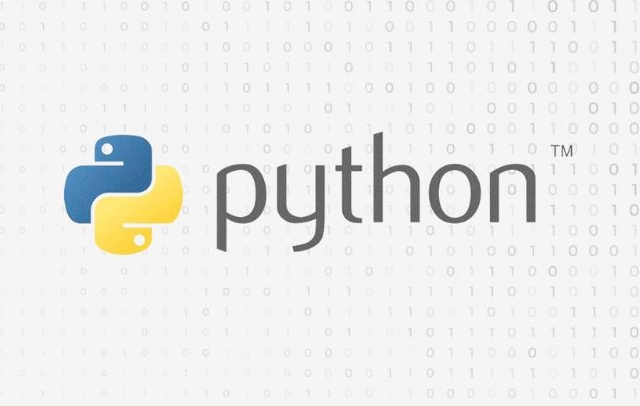In Python, iterators are objects that allow looping through collections by implementing __iter__() and __next__(). 1) Iterators work via the iterator protocol, using __iter__() to return the iterator and __next__() to retrieve the next item until StopIteration is raised. 2) An iterable (like a list or dict) provides an iterator via __iter__(), while the iterator manages iteration state. 3) Custom iterators can be built in classes, useful for memory-efficient or infinite sequences like generating even numbers without storing them all. 4) Common pitfalls include exhausted iterators not resetting and improper reuse across loops or functions like sum().

Python iterators are objects that let you loop through collections like lists, tuples, or dictionaries one item at a time. They’re the behind-the-scenes mechanism that makes loops like for work in Python.

How do iterators work in Python?
At the core of Python’s iteration system is the iterator protocol, which requires two methods:
-
__iter__()– returns the iterator object itself -
__next__()– returns the next value from the collection
When you use a for loop on a list or dictionary, Python automatically creates an iterator and calls next() until there are no items left. When there are no more items, __next__() raises a StopIteration exception to signal the end of iteration.

For example:
my_list = [1, 2, 3] it = iter(my_list) print(next(it)) # prints 1 print(next(it)) # prints 2
You can also build your own custom iterator by defining a class with these two methods.

What’s the difference between iterable and iterator?
This is a common point of confusion for beginners.
- An iterable is any object that can return an iterator. Examples include lists, strings, dictionaries, and files.
- An iterator is the object that actually does the iterating — it keeps track of the current state and returns the next item.
So when you call iter(some_list), you get an iterator back. The iterable gives you access to the data, while the iterator handles how you go through it.
Here’s a quick way to remember:
- Iterable: has
__iter__() - Iterator: has both
__iter__()and__next__()
When would you use a custom iterator?
Custom iterators are useful when you want to define your own way of traversing a sequence — maybe you're dealing with infinite sequences, or you want to control memory usage by generating values on the fly.
For instance, imagine you want to generate even numbers without storing them all in memory:
class EvenNumbers:
def __init__(self, limit):
self.limit = limit
self.value = 0
def __iter__(self):
return self
def __next__(self):
if self.value >= self.limit:
raise StopIteration
result = self.value
self.value = 2
return resultThen you can use it like this:
for num in EvenNumbers(10):
print(num)This will print even numbers from 0 to 8.
Common pitfalls when working with iterators
There are a few things to watch out for:
- Once you’ve exhausted an iterator, calling
next()again will raiseStopIteration. - Iterators don’t reset themselves — once done, they stay done.
- If you reuse an iterator in multiple places, you might find nothing left after the first loop.
To avoid issues:
- Don't reuse the same iterator multiple times; create a new one each time.
- Use built-in functions like
list()ortuple()if you need to store results for later use. - Be careful mixing iterators with functions that consume them fully, like
sum()ormax().
That's basically how iterators work in Python — not too flashy, but essential for handling loops efficiently.
The above is the detailed content of What are python iterators?. For more information, please follow other related articles on the PHP Chinese website!

Hot AI Tools

Undress AI Tool
Undress images for free

Undresser.AI Undress
AI-powered app for creating realistic nude photos

AI Clothes Remover
Online AI tool for removing clothes from photos.

Clothoff.io
AI clothes remover

Video Face Swap
Swap faces in any video effortlessly with our completely free AI face swap tool!

Hot Article

Hot Tools

Notepad++7.3.1
Easy-to-use and free code editor

SublimeText3 Chinese version
Chinese version, very easy to use

Zend Studio 13.0.1
Powerful PHP integrated development environment

Dreamweaver CS6
Visual web development tools

SublimeText3 Mac version
God-level code editing software (SublimeText3)

Hot Topics
 How to iterate over two lists at once Python
Jul 09, 2025 am 01:13 AM
How to iterate over two lists at once Python
Jul 09, 2025 am 01:13 AM
A common method to traverse two lists simultaneously in Python is to use the zip() function, which will pair multiple lists in order and be the shortest; if the list length is inconsistent, you can use itertools.zip_longest() to be the longest and fill in the missing values; combined with enumerate(), you can get the index at the same time. 1.zip() is concise and practical, suitable for paired data iteration; 2.zip_longest() can fill in the default value when dealing with inconsistent lengths; 3.enumerate(zip()) can obtain indexes during traversal, meeting the needs of a variety of complex scenarios.
 What are python iterators?
Jul 08, 2025 am 02:56 AM
What are python iterators?
Jul 08, 2025 am 02:56 AM
InPython,iteratorsareobjectsthatallowloopingthroughcollectionsbyimplementing__iter__()and__next__().1)Iteratorsworkviatheiteratorprotocol,using__iter__()toreturntheiteratorand__next__()toretrievethenextitemuntilStopIterationisraised.2)Aniterable(like
 How to call Python from C ?
Jul 08, 2025 am 12:40 AM
How to call Python from C ?
Jul 08, 2025 am 12:40 AM
To call Python code in C, you must first initialize the interpreter, and then you can achieve interaction by executing strings, files, or calling specific functions. 1. Initialize the interpreter with Py_Initialize() and close it with Py_Finalize(); 2. Execute string code or PyRun_SimpleFile with PyRun_SimpleFile; 3. Import modules through PyImport_ImportModule, get the function through PyObject_GetAttrString, construct parameters of Py_BuildValue, call the function and process return
 What is a forward reference in Python type hints for classes?
Jul 09, 2025 am 01:46 AM
What is a forward reference in Python type hints for classes?
Jul 09, 2025 am 01:46 AM
ForwardreferencesinPythonallowreferencingclassesthatarenotyetdefinedbyusingquotedtypenames.TheysolvetheissueofmutualclassreferenceslikeUserandProfilewhereoneclassisnotyetdefinedwhenreferenced.Byenclosingtheclassnameinquotes(e.g.,'Profile'),Pythondela
 Parsing XML data in Python
Jul 09, 2025 am 02:28 AM
Parsing XML data in Python
Jul 09, 2025 am 02:28 AM
Processing XML data is common and flexible in Python. The main methods are as follows: 1. Use xml.etree.ElementTree to quickly parse simple XML, suitable for data with clear structure and low hierarchy; 2. When encountering a namespace, you need to manually add prefixes, such as using a namespace dictionary for matching; 3. For complex XML, it is recommended to use a third-party library lxml with stronger functions, which supports advanced features such as XPath2.0, and can be installed and imported through pip. Selecting the right tool is the key. Built-in modules are available for small projects, and lxml is used for complex scenarios to improve efficiency.
 What is descriptor in python
Jul 09, 2025 am 02:17 AM
What is descriptor in python
Jul 09, 2025 am 02:17 AM
The descriptor protocol is a mechanism used in Python to control attribute access behavior. Its core answer lies in implementing one or more of the __get__(), __set__() and __delete__() methods. 1.__get__(self,instance,owner) is used to obtain attribute value; 2.__set__(self,instance,value) is used to set attribute value; 3.__delete__(self,instance) is used to delete attribute value. The actual uses of descriptors include data verification, delayed calculation of properties, property access logging, and implementation of functions such as property and classmethod. Descriptor and pr
 how to avoid long if else chains in python
Jul 09, 2025 am 01:03 AM
how to avoid long if else chains in python
Jul 09, 2025 am 01:03 AM
When multiple conditional judgments are encountered, the if-elif-else chain can be simplified through dictionary mapping, match-case syntax, policy mode, early return, etc. 1. Use dictionaries to map conditions to corresponding operations to improve scalability; 2. Python 3.10 can use match-case structure to enhance readability; 3. Complex logic can be abstracted into policy patterns or function mappings, separating the main logic and branch processing; 4. Reducing nesting levels by returning in advance, making the code more concise and clear. These methods effectively improve code maintenance and flexibility.
 Implementing multi-threading in Python
Jul 09, 2025 am 01:11 AM
Implementing multi-threading in Python
Jul 09, 2025 am 01:11 AM
Python multithreading is suitable for I/O-intensive tasks. 1. It is suitable for scenarios such as network requests, file reading and writing, user input waiting, etc., such as multi-threaded crawlers can save request waiting time; 2. It is not suitable for computing-intensive tasks such as image processing and mathematical operations, and cannot operate in parallel due to global interpreter lock (GIL). Implementation method: You can create and start threads through the threading module, and use join() to ensure that the main thread waits for the child thread to complete, and use Lock to avoid data conflicts, but it is not recommended to enable too many threads to avoid affecting performance. In addition, the ThreadPoolExecutor of the concurrent.futures module provides a simpler usage, supports automatic management of thread pools and asynchronous acquisition






